Hutt, MidCentral, Wellington > Private Hospitals & Specialists >
Pacific Radiology - Wellington / Manawatū
Private Service, Radiology, Pregnancy Ultrasound
Today
17 Adelaide Road, Mount Cook, Wellington
8:00 AM to 9:00 PM.
Description
Pacific Radiology is part of the RHCNZ Medical Imaging Group - New Zealand's largest leading private radiology provider, dedicated to making world-class radiology services accessible to our local communities.
Services Available:
| X-ray | US | Pregnancy US | MRI | CT | Breast Imaging | PET/CT | Bone Density | Interventional Services | |
| ● | ● | ● | ● | ● | ● | ||||
| Palmerston North | ● | ● | ● | ● | ● | ||||
| Wellington - After Hours | ● | ||||||||
| Wellington - Boulcott Hospital | ● | ● | ● | ● | ● | ● | ● | ● | |
| Wellington - Bowen Centre | ● | ● | ● | ● | ● | ● | ● | ||
| Wellington - Lambton Quay | ● | ● | ● | ● | ● | ||||
| Wellington - Porirua | ● | ● | ● | ||||||
| Wellington - Upper Hutt | ● | ● | ● | ||||||
| Wellington - Wakefield | ● | ● | ● | ● | ● | ● | ● |
Consultants
-

Dr Ian Best
Radiologist
-

Dr Jonathan Bong
Radiologist
-

Dr Doug Braithwaite
Radiologist
-

Dr Samantha Castillo
Radiologist
-

Dr Sau Chang
Radiologist
-
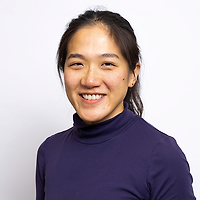
Dr Suzy Chin
Radiologist
-

Dr Terence Cousins
Radiologist
-
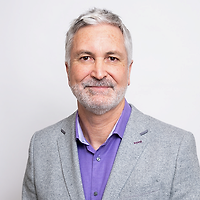
Dr John Denton
Radiologist
-
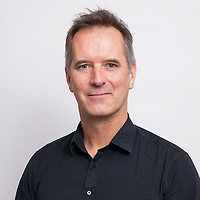
Dr Joe Feltham
Radiologist
-

Dr Anthony Harris
Radiologist
-
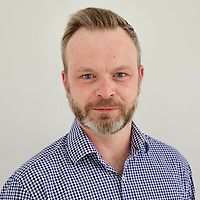
Dr David Healey
Radiologist
-

Dr Nick Humphries
Radiologist
-

Dr Mulvey Kelly
Radiologist
-

Dr Nick Kenning
Managing Radiologist
-

Dr Andrew Kingzett Taylor
Radiology
-

Dr Jade Lodge
Obstetrician & Gynaecologist
-

Dr Fran McCaul
Radiologist
-
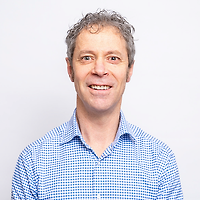
Dr Ross McKellar
Radiologist
-

Dr Vijayan Moodley
Radiologist
-

Dr Ken Okawa
Radiologist
-

Dr Kaveshini Pillay
Radiologist
-
Dr Monica Saini
Radiologist
-

Dr Lea Schafer
Radiologist
-
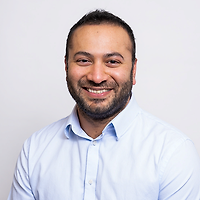
Dr Arshad Sheriff
Radiologist
-

Dr Lisa Sweetman
Radiologist
-
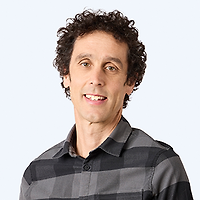
Dr Gianluca Valsenti
Radiologist
-

Dr George Waterworth
Radiologist
-

Dr Rodney Wu
Radiologist
Ages
Child / Tamariki, Youth / Rangatahi, Adult / Pakeke, Older adult / Kaumātua
How do I access this service?
Make an appointment
Book now: 0800 674 722; wellington.enquiries@pacificradiology.com
Referral
Referral Expectations
Referrers: click here for contact details, referral forms and information about direct image access
Fees and Charges Categorisation
Fees apply
Fees and Charges Description
Pacific Radiology is an affiliated provider with Southern Cross Health Insurance.
Click here for information about payments.
Hours
17 Adelaide Road, Mount Cook, Wellington
8:00 AM to 9:00 PM.
| Mon – Tue | 8:00 AM – 9:00 PM |
|---|---|
| Wed | 9:00 AM – 9:00 PM |
| Thu – Fri | 8:00 AM – 9:00 PM |
| Sat – Sun | 10:00 AM – 6:00 PM |
Public Holidays: Open on all public holidays outside the Christmas period The following public holidays differ to standard opening hours: Wellington Anniversary (19 Jan, 10:00 AM – 4:00 PM), Waitangi Day (6 Feb, 10:00 AM – 4:00 PM), Good Friday (3 Apr, 10:00 AM – 4:00 PM), Easter Sunday (5 Apr, 10:00 AM – 4:00 PM), Easter Monday (6 Apr, 10:00 AM – 4:00 PM), ANZAC Day (observed) (27 Apr, 10:00 AM – 4:00 PM), King's Birthday (1 Jun, 10:00 AM – 4:00 PM), Matariki (10 Jul, 10:00 AM – 4:00 PM), Labour Day (26 Oct, 10:00 AM – 4:00 PM).
Christmas: Open 22 Dec — 24 Dec. Closed 25 Dec. Open 26 Dec (10:00 AM – 6:00 PM). Open 27 Dec — 1 Jan. Open 1 Jan (10:00 AM – 6:00 PM). Open 2 Jan (10:00 AM – 6:00 PM). Open 3 Jan — 9 Jan.
Procedures / Treatments
Ultrasound imaging, also called ultrasound scanning, is a method of obtaining pictures from inside the human body through the use of high frequency sound waves. Obstetric ultrasound refers to the specialised use of this technique to produce a picture of your unborn baby while it is inside your uterus (womb). The sound waves are emitted from a hand-held nozzle, which is placed on your stomach, and reflection of these sound waves is displayed as a picture of the moving foetus (unborn baby) on a monitor screen. No x-rays are involved in ultrasound imaging. Measurements of the image of the foetus help in the assessment of its size and growth as well as confirming the due date of delivery.
Ultrasound imaging, also called ultrasound scanning, is a method of obtaining pictures from inside the human body through the use of high frequency sound waves. Obstetric ultrasound refers to the specialised use of this technique to produce a picture of your unborn baby while it is inside your uterus (womb). The sound waves are emitted from a hand-held nozzle, which is placed on your stomach, and reflection of these sound waves is displayed as a picture of the moving foetus (unborn baby) on a monitor screen. No x-rays are involved in ultrasound imaging. Measurements of the image of the foetus help in the assessment of its size and growth as well as confirming the due date of delivery.
Ultrasound imaging, also called ultrasound scanning, is a method of obtaining pictures from inside the human body through the use of high frequency sound waves. Obstetric ultrasound refers to the specialised use of this technique to produce a picture of your unborn baby while it is inside your uterus (womb).
The sound waves are emitted from a hand-held nozzle, which is placed on your stomach, and reflection of these sound waves is displayed as a picture of the moving foetus (unborn baby) on a monitor screen.
No x-rays are involved in ultrasound imaging. Measurements of the image of the foetus help in the assessment of its size and growth as well as confirming the due date of delivery.
An X-ray is a high frequency, high energy wave form. It cannot be seen with the naked eye, but can be picked up on photographic film. Although you may think of an X-ray as a picture of bones, a trained observer can also see air spaces, like the lungs (which look black) and fluid (which looks white, but not as white as bones). What to expect? You will have all metal objects removed from your body. You will be asked to remain still in a specific position and hold your breath on command. There are staff present, but they will not necessarily remain in the room, but will speak with you via an intercom system and will be viewing the procedure constantly through a windowed control room. The examination time will vary depending on the type of procedure required, but as a rule it will take around 30 minutes. Read more here
An X-ray is a high frequency, high energy wave form. It cannot be seen with the naked eye, but can be picked up on photographic film. Although you may think of an X-ray as a picture of bones, a trained observer can also see air spaces, like the lungs (which look black) and fluid (which looks white, but not as white as bones). What to expect? You will have all metal objects removed from your body. You will be asked to remain still in a specific position and hold your breath on command. There are staff present, but they will not necessarily remain in the room, but will speak with you via an intercom system and will be viewing the procedure constantly through a windowed control room. The examination time will vary depending on the type of procedure required, but as a rule it will take around 30 minutes. Read more here
An X-ray is a high frequency, high energy wave form. It cannot be seen with the naked eye, but can be picked up on photographic film. Although you may think of an X-ray as a picture of bones, a trained observer can also see air spaces, like the lungs (which look black) and fluid (which looks white, but not as white as bones).
What to expect?
You will have all metal objects removed from your body. You will be asked to remain still in a specific position and hold your breath on command. There are staff present, but they will not necessarily remain in the room, but will speak with you via an intercom system and will be viewing the procedure constantly through a windowed control room.
The examination time will vary depending on the type of procedure required, but as a rule it will take around 30 minutes.
Read more here
In ultrasound, a beam of sound at a very high frequency (that cannot be heard) is sent into the body from a small vibrating crystal in a hand-held scanner head. When the beam meets a surface between tissues of different density, echoes of the sound beam are sent back into the scanner head. The time between sending the sound and receiving the echo back is fed into a computer, which in turn creates an image that is projected on a television screen. Ultrasound is a very safe type of imaging; this is why it is so widely used during pregnancy. Doppler ultrasound A Doppler study is a noninvasive test that can be used to evaluate blood flow by bouncing high-frequency sound waves (ultrasound) off red blood cells. The Doppler Effect is a change in the frequency of sound waves caused by moving objects. A Doppler study can estimate how fast blood flows by measuring the rate of change in its pitch (frequency). A Doppler study can help diagnose bloody clots, heart and leg valve problems and blocked or narrowed arteries. What to expect? After lying down, the area to be examined will be exposed. Generally a contact gel will be used between the scanner head and skin. The scanner head is then pressed against your skin and moved around and over the area to be examined. At the same time the internal images will appear onto a screen. Read more here
In ultrasound, a beam of sound at a very high frequency (that cannot be heard) is sent into the body from a small vibrating crystal in a hand-held scanner head. When the beam meets a surface between tissues of different density, echoes of the sound beam are sent back into the scanner head. The time between sending the sound and receiving the echo back is fed into a computer, which in turn creates an image that is projected on a television screen. Ultrasound is a very safe type of imaging; this is why it is so widely used during pregnancy. Doppler ultrasound A Doppler study is a noninvasive test that can be used to evaluate blood flow by bouncing high-frequency sound waves (ultrasound) off red blood cells. The Doppler Effect is a change in the frequency of sound waves caused by moving objects. A Doppler study can estimate how fast blood flows by measuring the rate of change in its pitch (frequency). A Doppler study can help diagnose bloody clots, heart and leg valve problems and blocked or narrowed arteries. What to expect? After lying down, the area to be examined will be exposed. Generally a contact gel will be used between the scanner head and skin. The scanner head is then pressed against your skin and moved around and over the area to be examined. At the same time the internal images will appear onto a screen. Read more here
In ultrasound, a beam of sound at a very high frequency (that cannot be heard) is sent into the body from a small vibrating crystal in a hand-held scanner head. When the beam meets a surface between tissues of different density, echoes of the sound beam are sent back into the scanner head. The time between sending the sound and receiving the echo back is fed into a computer, which in turn creates an image that is projected on a television screen. Ultrasound is a very safe type of imaging; this is why it is so widely used during pregnancy.
Doppler ultrasound
A Doppler study is a noninvasive test that can be used to evaluate blood flow by bouncing high-frequency sound waves (ultrasound) off red blood cells. The Doppler Effect is a change in the frequency of sound waves caused by moving objects. A Doppler study can estimate how fast blood flows by measuring the rate of change in its pitch (frequency). A Doppler study can help diagnose bloody clots, heart and leg valve problems and blocked or narrowed arteries.
What to expect?
After lying down, the area to be examined will be exposed. Generally a contact gel will be used between the scanner head and skin. The scanner head is then pressed against your skin and moved around and over the area to be examined. At the same time the internal images will appear onto a screen.
Read more here
An MRI machine does not work like an X-ray or CT; it is used for exact images of internal organs and body structures. This method delivers clear images without the exposure of radiation. The procedure uses a combination of magnetic fields and radio waves which results in an image being made using the MRI’s computer. What to expect? You will have all metal objects removed from your body. You will lie down on a narrow padded moveable table that will be slid into the scanner, through a circular opening. You will feel nothing while the scan is in progress, but some people can feel slightly claustrophobic or closed in, whilst inside the scanner. You will be asked to remain still and hold your breath on command. There are staff present, but they will not necessarily remain in the room, but will speak with you via an intercom system and will be viewing the procedure constantly through a windowed control room, from where they will run the scanner. Some procedures will require Contrast Medium. Contrast medium is a substance that makes the image of the CT or MRI clearer. Contrast can be given by mouth, rectally, or by injection into the bloodstream. The scan time will vary depending on the type of examination required, but as a rule it will take around 30 minutes. Read more here
An MRI machine does not work like an X-ray or CT; it is used for exact images of internal organs and body structures. This method delivers clear images without the exposure of radiation. The procedure uses a combination of magnetic fields and radio waves which results in an image being made using the MRI’s computer. What to expect? You will have all metal objects removed from your body. You will lie down on a narrow padded moveable table that will be slid into the scanner, through a circular opening. You will feel nothing while the scan is in progress, but some people can feel slightly claustrophobic or closed in, whilst inside the scanner. You will be asked to remain still and hold your breath on command. There are staff present, but they will not necessarily remain in the room, but will speak with you via an intercom system and will be viewing the procedure constantly through a windowed control room, from where they will run the scanner. Some procedures will require Contrast Medium. Contrast medium is a substance that makes the image of the CT or MRI clearer. Contrast can be given by mouth, rectally, or by injection into the bloodstream. The scan time will vary depending on the type of examination required, but as a rule it will take around 30 minutes. Read more here
An MRI machine does not work like an X-ray or CT; it is used for exact images of internal organs and body structures. This method delivers clear images without the exposure of radiation.
The procedure uses a combination of magnetic fields and radio waves which results in an image being made using the MRI’s computer.
What to expect?
You will have all metal objects removed from your body. You will lie down on a narrow padded moveable table that will be slid into the scanner, through a circular opening.
You will feel nothing while the scan is in progress, but some people can feel slightly claustrophobic or closed in, whilst inside the scanner. You will be asked to remain still and hold your breath on command. There are staff present, but they will not necessarily remain in the room, but will speak with you via an intercom system and will be viewing the procedure constantly through a windowed control room, from where they will run the scanner.
Some procedures will require Contrast Medium. Contrast medium is a substance that makes the image of the CT or MRI clearer. Contrast can be given by mouth, rectally, or by injection into the bloodstream.
The scan time will vary depending on the type of examination required, but as a rule it will take around 30 minutes.
Read more here
With CT you can differentiate many more things than with a normal X-ray. A CT image is created by using an X-ray beam, which is sent through the body from different angles, and by using a complicated mathematical process the computer of the CT is able to produce an image. This allows cross-sectional images of the body without cutting it open. The CT is used to view all body structures but especially soft tissue such as body organs (heart, lungs, liver etc.). What to expect? You will have all metal objects removed from your body. You will lie down on a narrow padded moveable table that will be slid into the scanner, through a circular opening. You will feel nothing while the scan is in progress, but some people can feel slightly claustrophobic or closed in, whilst inside the scanner. You will be asked to remain still and hold your breath on command. There are staff present, but they will not necessarily remain in the room, but will speak with you via an intercom system and will be viewing the procedure constantly through a windowed control room, from where they will run the scanner. Some procedures will require Contrast Medium. Contrast medium is a substance that makes the image of the CT or MRI clearer. Contrast medium can be given by mouth, rectally, or by injection into the bloodstream.v The scan time will vary depending on the type of examination required, but as a rule it will take around 30 minutes. Read more here
With CT you can differentiate many more things than with a normal X-ray. A CT image is created by using an X-ray beam, which is sent through the body from different angles, and by using a complicated mathematical process the computer of the CT is able to produce an image. This allows cross-sectional images of the body without cutting it open. The CT is used to view all body structures but especially soft tissue such as body organs (heart, lungs, liver etc.). What to expect? You will have all metal objects removed from your body. You will lie down on a narrow padded moveable table that will be slid into the scanner, through a circular opening. You will feel nothing while the scan is in progress, but some people can feel slightly claustrophobic or closed in, whilst inside the scanner. You will be asked to remain still and hold your breath on command. There are staff present, but they will not necessarily remain in the room, but will speak with you via an intercom system and will be viewing the procedure constantly through a windowed control room, from where they will run the scanner. Some procedures will require Contrast Medium. Contrast medium is a substance that makes the image of the CT or MRI clearer. Contrast medium can be given by mouth, rectally, or by injection into the bloodstream.v The scan time will vary depending on the type of examination required, but as a rule it will take around 30 minutes. Read more here
With CT you can differentiate many more things than with a normal X-ray. A CT image is created by using an X-ray beam, which is sent through the body from different angles, and by using a complicated mathematical process the computer of the CT is able to produce an image. This allows cross-sectional images of the body without cutting it open. The CT is used to view all body structures but especially soft tissue such as body organs (heart, lungs, liver etc.).
What to expect?
You will have all metal objects removed from your body. You will lie down on a narrow padded moveable table that will be slid into the scanner, through a circular opening.
You will feel nothing while the scan is in progress, but some people can feel slightly claustrophobic or closed in, whilst inside the scanner. You will be asked to remain still and hold your breath on command. There are staff present, but they will not necessarily remain in the room, but will speak with you via an intercom system and will be viewing the procedure constantly through a windowed control room, from where they will run the scanner.
Some procedures will require Contrast Medium. Contrast medium is a substance that makes the image of the CT or MRI clearer. Contrast medium can be given by mouth, rectally, or by injection into the bloodstream.v
The scan time will vary depending on the type of examination required, but as a rule it will take around 30 minutes.
Read more here
A mammogram is a special type of x-ray used only for the breast. Mammography can be used either to look for very early breast cancer in women without breast symptoms (screening) or to examine women who do have breast symptoms (diagnostic). What to expect? You will need to undress from the waist up. One of your breasts will be positioned between two plastic plates which will flatten the breast slightly. Most women find that this is a bit uncomfortable, but not painful. Generally two x-rays are taken of each breast. It is also useful to compare the results with earlier examinations and you should take any previous mammography results with you. Read more here
A mammogram is a special type of x-ray used only for the breast. Mammography can be used either to look for very early breast cancer in women without breast symptoms (screening) or to examine women who do have breast symptoms (diagnostic). What to expect? You will need to undress from the waist up. One of your breasts will be positioned between two plastic plates which will flatten the breast slightly. Most women find that this is a bit uncomfortable, but not painful. Generally two x-rays are taken of each breast. It is also useful to compare the results with earlier examinations and you should take any previous mammography results with you. Read more here
A mammogram is a special type of x-ray used only for the breast. Mammography can be used either to look for very early breast cancer in women without breast symptoms (screening) or to examine women who do have breast symptoms (diagnostic).
What to expect?
You will need to undress from the waist up. One of your breasts will be positioned between two plastic plates which will flatten the breast slightly. Most women find that this is a bit uncomfortable, but not painful. Generally two x-rays are taken of each breast. It is also useful to compare the results with earlier examinations and you should take any previous mammography results with you.
Read more here
DEXA (which stands for dual energy x-ray absorptiometry) scanning uses special x-rays to measure the density of your bones. The density of your bones will show how strong they are. The exposure to x-rays is very low and is similar to what you would receive on a long distance plane flight. What to expect? You will lie very still on a padded table for 5-10 minutes while the arm of the machine passes over the area to be measured (usually the lower spine and hip, although the forearm can also be measured). This is quite painless. You can remain in your normal clothing, although you may have to take off anything with large buttons, buckles or metal zips. Read more here
DEXA (which stands for dual energy x-ray absorptiometry) scanning uses special x-rays to measure the density of your bones. The density of your bones will show how strong they are. The exposure to x-rays is very low and is similar to what you would receive on a long distance plane flight. What to expect? You will lie very still on a padded table for 5-10 minutes while the arm of the machine passes over the area to be measured (usually the lower spine and hip, although the forearm can also be measured). This is quite painless. You can remain in your normal clothing, although you may have to take off anything with large buttons, buckles or metal zips. Read more here
DEXA (which stands for dual energy x-ray absorptiometry) scanning uses special x-rays to measure the density of your bones. The density of your bones will show how strong they are. The exposure to x-rays is very low and is similar to what you would receive on a long distance plane flight.
What to expect?
You will lie very still on a padded table for 5-10 minutes while the arm of the machine passes over the area to be measured (usually the lower spine and hip, although the forearm can also be measured). This is quite painless.
You can remain in your normal clothing, although you may have to take off anything with large buttons, buckles or metal zips.
Read more here
Read about Positron Emission Tomography (PET) / CT Scans here
Read about Positron Emission Tomography (PET) / CT Scans here
Service types: PET/ CT scan.
Read about Positron Emission Tomography (PET) / CT Scans here
Our specialist radiologists use a range of diagnostic imaging tools to guide very specific interventional examinations and procedures. Read more here
Our specialist radiologists use a range of diagnostic imaging tools to guide very specific interventional examinations and procedures. Read more here
Service types: Image guided procedures | Interventional radiology.
Our specialist radiologists use a range of diagnostic imaging tools to guide very specific interventional examinations and procedures.
Read more here
Special pictures of the inside of the breast are taken to check for any problems. It can include mammograms, tomosynthesis (3D mammograms), ultrasounds, and magnetic resonance imaging (MRI).
Special pictures of the inside of the breast are taken to check for any problems. It can include mammograms, tomosynthesis (3D mammograms), ultrasounds, and magnetic resonance imaging (MRI).
Special pictures of the inside of the breast are taken to check for any problems. It can include mammograms, tomosynthesis (3D mammograms), ultrasounds, and magnetic resonance imaging (MRI).
Online Booking URL
Pharmacy
Find your nearest pharmacy here
Website
Contact Details
17 Adelaide Road, Mount Cook, Wellington
Wellington
8:00 AM to 9:00 PM.
-
Phone
(04) 978 5500
-
Fax
(04) 978 5501
Website
Freephone: 0800 674 722
17 Adelaide Road
Mount Cook
Wellington
Wellington 6021
Street Address
17 Adelaide Road
Mount Cook
Wellington
Wellington 6021
Postal Address
PO BOX 7168
Wellington 6242
150 Kapiti Road (Radiology Building), Paraparaumu
Wellington
8:00 AM to 4:30 PM.
-
Phone
(04) 978 5500
-
Fax
(04) 978 5501
Website
33-43 Princess Street, Palmerston North
MidCentral
8:00 AM to 5:00 PM.
-
Phone
(06) 954 2040
-
Fax
(06) 954 2041
Website
668 High Street, Lower Hutt
Hutt
8:00 AM to 5:00 PM.
-
Phone
(04) 978 5500
-
Fax
(04) 978 5501
Website
Bowen Specialist Centre, 98 Churchill Drive, Crofton Downs, Wellington
Wellington
8:00 AM to 5:00 PM.
-
Phone
(04) 978 5500
-
Fax
(04) 978 5501
Website
142 Lambton Quay, Wellington
Wellington
8:00 AM to 4:30 PM.
-
Phone
(04) 978 5500
-
Fax
(04) 978 5501
Website
2 Hartham Place South, Porirua
Wellington
8:00 AM to 4:30 PM.
-
Phone
0800 477 448
Email
Website
Queen Street Carpark, Upper Hutt, Wellington
Hutt
8:00 AM to 4:30 PM.
-
Phone
(04) 978 5500
-
Fax
(04) 978 5501
Website
99 Rintoul Street, Newtown, Wellington
Wellington
8:00 AM to 5:00 PM.
-
Phone
(04) 978 5570
-
Fax
(04) 978 5571
Website
Was this page helpful?
This page was last updated at 11:05AM on July 22, 2025. This information is reviewed and edited by Pacific Radiology - Wellington / Manawatū.
